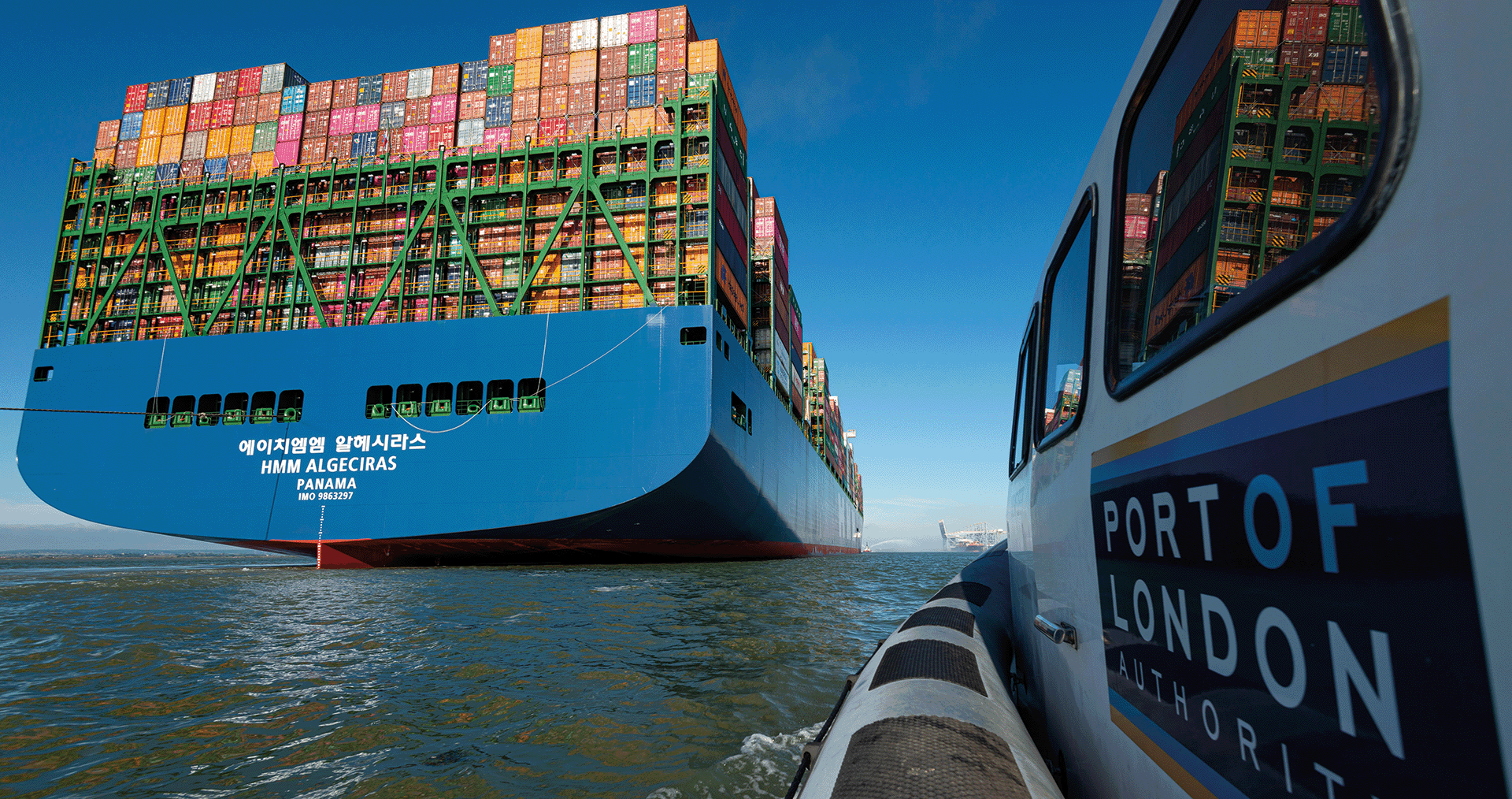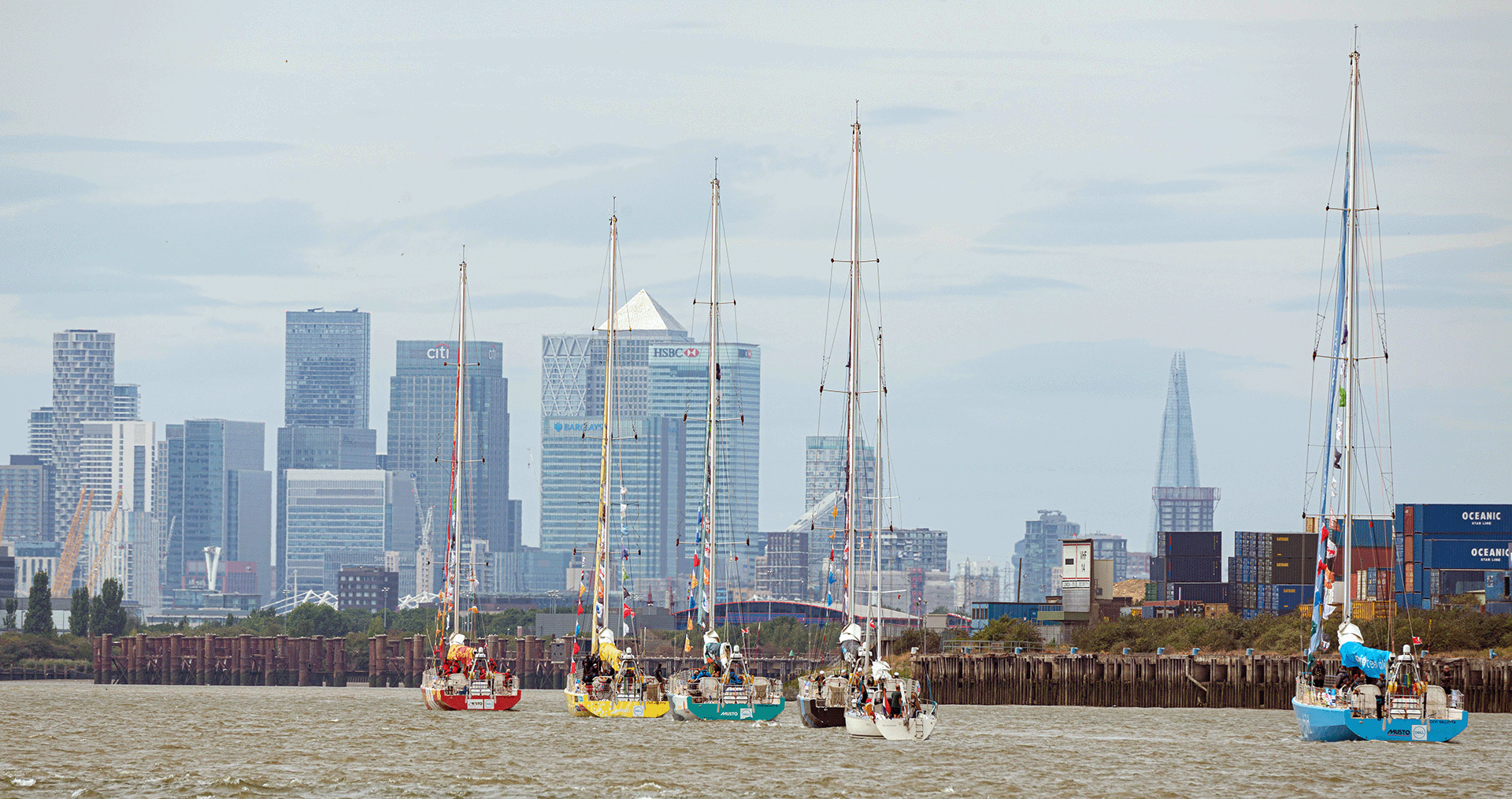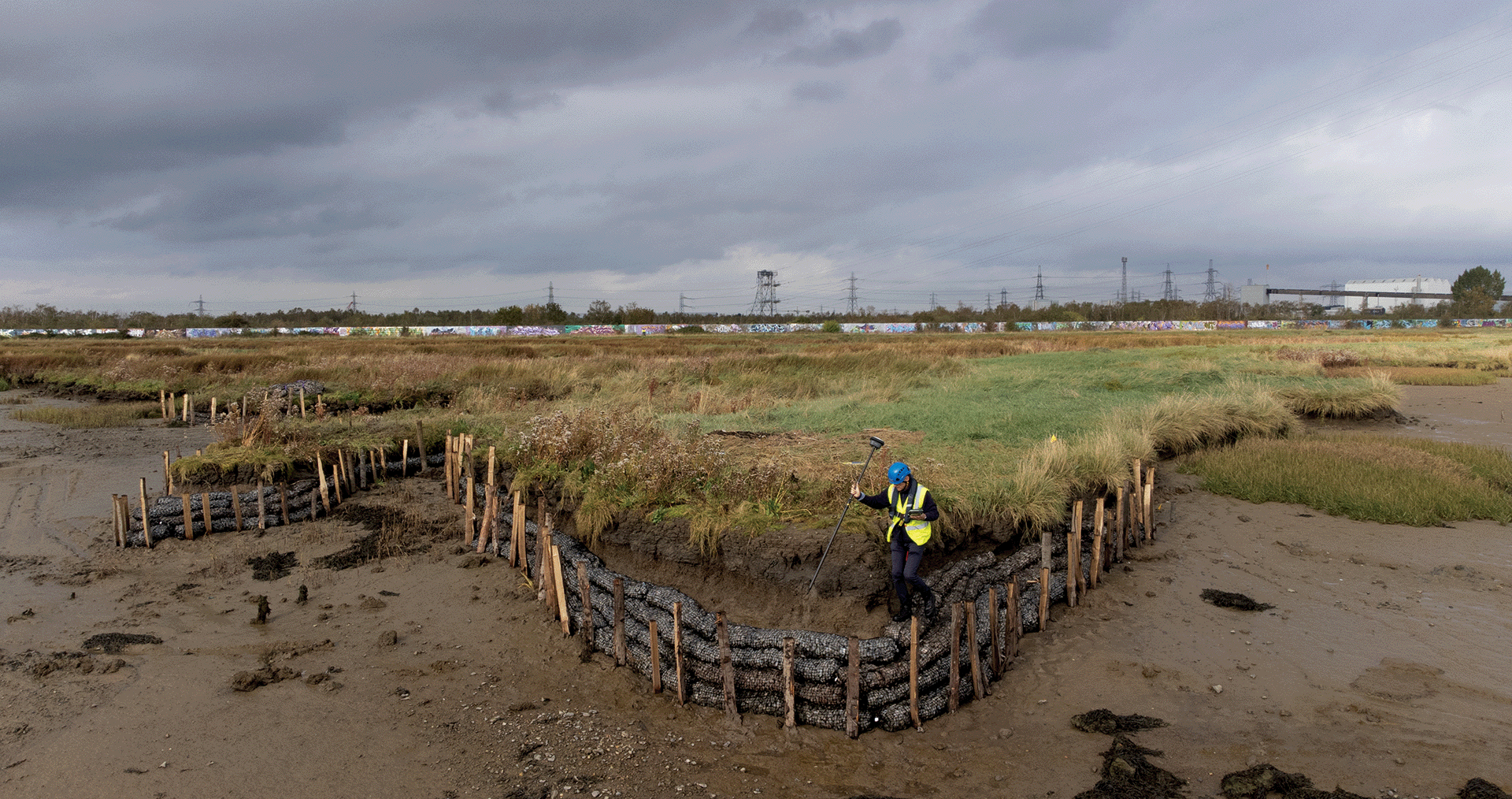Live Tides
NOTICES TO MARINERS
Charts & Surveys

Incident reporting
Life-threatening emergencies on the river:
Call 999 and ask for the Coastguard
For near miss, safety observations and incident reporting click below
Thames Vision 2050 Priorities
The next 30 years will see substantial change across the economy and society as we transition to Net Zero, and mitigate the effects of climate changes, alongside other opportunities and challenges
With stakeholders, we have agreed five cross cutting priorities for action.
Safety
We expect the port and river to become markedly busier between now and the middle of the century.
To manage this growth, the PLA, fellow regulators, terminal and vessel operators will have to respond across all river uses, from trade to sport, new fuels and propulsion systems to new technology. A new marine control centre is expected to be a key part of our response.
Forecasts and established investment plans suggest we will see more cargo-carrying ships in the deep seaport. We also hope to see inland freight vessels carrying cargoes from the port to central London, alongside a growing passenger travel network, pushing eastwards to Gravesend. Sports participation is also forecast to increase, not just in the established west London heartland, but increasingly through east London and to the estuary seaside communities in Essex and Kent.
In the case of passenger vessels, ARUP’s study suggested that the peak of increased passenger travel demand could result in vessel movements in the busiest hour rising from 21, at the time of the study, to 42 at the maximum growth forecast.
We are developing plans for a new marine control centre to meet the needs of the busier port and river. It will have flexibility and capacity designed in to meet the changing needs we expect to emerge. These include increasing levels of digitalisation, levels of autonomy varying between vessel types and possibly new cargoes needing special precautions.
Safety regulation will evolve to reflect the evolution of vessels, propulsion, other technologies and cargoes. We will work closely with our partners at the Maritime and Coastguard Agency (MCA) on the development and application of appropriate regulation. Technology will be allied to continued safety dialogue with river users.
Face-to-face engagement remains important, particularly with the growing numbers of people pursuing independent activities, such as stand-up paddle boarding, outside traditional club structures.
Drowning prevention is a key area for partnership intervention, where the PLA works alongside the MCA, Met Police, RNLI, London Fire Brigade and others. Every year the emergency services deal with hundreds of calls relating to people in crisis. We will continue to work on this, following the principles set out in the Thames Drowning Prevention Strategy, which aims to tackle the average of 30 tidal Thames fatalities a year.

With stakeholders, we have agreed five cross cutting priorities for action.
Net Zero Transition
Climate change is accelerating.
Climate change is accelerating. In response, the UK Government introduced a legally binding UK target to achieve Net Zero by 2050; the Mayor of London is targeting a zero carbon city by 2030; the International Maritime Organization’s short-term measures are aimed at cutting ships’ carbon intensity by at least 40% by 2030.
Decarbonisation is consequently a major focus. On the Thames this stretches from port and river operations to diverse habitats that capture carbon from the atmosphere.
Work to reduce carbon emissions is part of the wider drive to improve local air quality. Vessels on the river provide some 1% of the London atmospheric emission inventory. The Air Quality Strategy for the tidal Thames, updated in 2020, features reduction targets for both NOx and PM of 95% for inland and 70% for deep sea shipping, respectively.
The port industrial complex has great potential to be at the heart of the wider economy’s decarbonisation drive. The Thames Estuary Growth Board’s Hydrogen Route Map sets out how this can be realised in terms of cleaner fuels, with ambitious plans for turning concept into reality:
“The Estuary has the key ingredients (brownfield sites, access to water, need, reliance on fossil fuel energy) to create a compelling case for investment in hydrogen.” – Thames Estuary Growth Board, October 2021
Major energy from waste generator and river operator, Cory, is also exploring the potential for carbon capture and storage, centred on the river for transport.
At the PLA we are leading a consortium of eight organisations in a development project looking at the scope to establish a national hydrogen highway network, integrating land, sea and port. Under the Smart Maritime Land Operations Call, a Maritime Research and Innovation UK (MarRI-UK) initiative supported by the Department for Transport (DfT) the two-and-a-half-year project is benefiting from £1.3 million towards the £2.1 million total cost.
Other Clean Maritime funded projects are being undertaken on the Thames by passenger vessel operator, Uber Boat by Thames Clippers. Hydrogen is just one of the diverse mix of fuels being explored for use in the marine environment. This is reflected in the PLA-produced Emissions reduction roadmap for inland vessels on the tidal Thames. This features interim ‘stepping stone’ solutions to reduce emissions in the short-term, including the use of HVO fuel and hybrid technologies.
Providing the infrastructure to support, together with the regulation to allow, the development and use of low emission alternative fuels will need to be considered closely. Other alternative fuels are being developed and assessed for deep sea vessel propulsion. Maersk has methanol-powered ships on order and CMA CGM has LNG-powered ships already in operation.
Vessels connecting to ’shore power’ to supply the onboard system’s electricity needs in port is set to become increasingly common. Using shore power, rather than onboard engines, reduces carbon and other emissions, improving air quality in ports and surrounding communities. On the Thames we have a target to develop a zero emission berth by 2025, contingent on technological and financial feasibility.
Other emissions reduction activities on the Thames which help incentivise operators include the Green Tariff, aimed at seagoing vessels, and the Thames Green Scheme for inland vessel operators. These provide reduced charges for operators of cleaner, greener vessels.

With stakeholders, we have agreed five cross cutting priorities for action.
Resilience
Sea level rise is set to be a major resilience concern through to the mid-century.
Sea level rise is set to be a major resilience concern through to the mid-century. The Environment Agency’s Thames Estuary 2100: 10-Year Review finds sea level rise in the estuary has accelerated over the last few decades at rates similar to the IPCC’s ‘very likely’ range of global mean sea level rise.
The COVID-19 pandemic has underlined the importance of resilient ports robustly able to continue performing their key role in supply chains.
The resilience of port systems is set to be tested and re-cast as we evolve through the trials of more extreme weather, new energy supplies, new cargoes, ship technology and sources of motive power.
The Resilience Shift – the group created by Lloyd’s Register and Arup to assure the future of critical infrastructure – captures the challenge in their Resilience 4 Ports work (January 2021):
“In an increasingly complex and uncertain world, port resilience is essential to business continuity, but also to the critical infrastructure systems that ports connect. Port cities need resilient, low carbon gateways to prosper.”
Resilience Shift defines resilience as the ability to withstand, adapt to changing conditions, and recover positively from shocks and stresses. This applies across physical infrastructure, the natural environment, organisations and people managing the systems.
The port’s supporting infrastructure needs include the road and rail network to transfer goods to and from customers, allied to a power grid flexible enough to handle increasing demands for electricity and diversified points of power generation.

SPOTLIGHT ON
Thames Estuary 2100 Plan
The Thames Estuary 2100 Plan sets out how the Environment Agency and its partners are working together to manage tidal flood risk in the Thames Estuary.
With temperatures increasing and sea levels rising, this is a key part of climate change adaptation and creating resilient communities in the Thames Estuary.
Over three phases of activity, from now to 2100, the plan maps out the range of progressive changes to be made so that protection of the estuary from Shoeburyness/Sheerness to Teddington against flooding is continued. The steps range from maintaining and improving current flood risk management assets in Phase 1, through raising them in Phase 2, to developing and implementing the selected option for the future Thames Barrier in Phase 3.
As the current Thames Barrier will continue to function until 2070, the decision on the final option for the Barrier is unlikely to be made until around 2040 to ensure that the plan remains adaptive to climate change. Construction is expected to be in the period after 2050.

With stakeholders, we have agreed five cross cutting priorities for action.
Ship and Port Technology
Maritime 2050 identifies significant technological change as key to the sector’s future.
Trends including ‘big data’ analytics, digitalisation and more advanced communications are highlighted as key to improving efficiency through potentially radically different vessel operations.
This provides major opportunity and challenge for the PLA as port authority, particularly responding to the potential autonomous vessel testing and operations in UK’s territorial waters. The International Association of Ports & Harbors says that port digitalisation will be second only in significance to the energy transition and emissions reduction in port development.
Smart, digitalised ports will use technology and data sharing to improve the efficiency of their operations. With Hamburg, Rotterdam and Antwerp as leading examples of this trend, we want to see London, both port authority and operators, join the growing global network of smart ports.
The success of greater digitalisation will be governed by the willingness of multiple stakeholders freely to share data to recognised global standards.
Technological change is set to be manifest across ship propulsion, auxiliary systems, navigation, monitoring and control. At the PLA our preparations will include developing a flexible new maritime control hub, ready to adjust as new technology and approaches, including vessel autonomy and potentially shore based pilotage, start to take shape. Already, the application of emerging data capability is shaping plans for the management of hydrographic data and its interface into Vessel Traffic Services systems in port control, as part of preparations for autonomous vessel navigation.
Greater autonomy, allied to improved vessel systems monitoring, management and control is set to improve the efficiency of operations. Vessel propulsion systems will also evolve as alternatives to traditional ships’ diesel fuel bunkers emerge.
Trials planned or already underway on the Thames includes barge operator Cory scoping the potential for autonomous barge operations. Vessel autonomy is also an integral part of the Maritime Hydrogen Highway project being undertaken by a PLA-led consortium of partners.
Developing ship and port technology will be critical for the busier and changing river. It will touch on other key areas for action including safety and resilience.

With stakeholders, we have agreed five cross cutting priorities for action.
Access and Inclusion
Over 95 miles, the river reaches communities of differing socio-economic make up and opportunity. Improving access and inclusion is a major priority for the Thames between now and 2050.
Improving people’s access to the river and inclusion in activities on it, no matter their background, reflects UK Government policy, in Maritime 2050 and the Mayor of London’s Strategy for Equality, Diversity and Inclusion.
Maritime 2050 articulates the UK maritime industry’s diversity challenge. Only 20% of the workforce are women, compared to a national average of 47%; in sea-based maritime roles, women make up just 2% of the world’s seafarers. Addressing this imbalance is a priority, which will unlock untapped workforce potential. At the PLA we are signatories to Maritime UK’s Women in Maritime Pledge, building an employment culture that encourages and celebrates gender diversity.
At a capital city level, the Mayor’s equality, diversity and inclusion strategy sets out the steps in hand to create a fairer, more equal, integrated city. As the hub from which London grew, the river needs to be part of this truly welcoming city for all.
The Thames should be representative of the communities that it serves and there should be equal access to the amenity and opportunity it provides. The Thames workforce today is not representative of the city and region; addressing this imbalance will open up access to the rewarding careers, cultural insight and mental health benefits the river offers and bring new perspectives to the Thames.
The Opinium public perception survey found relatively low knowledge and interest in the tidal Thames as a place of commerce and industry, with just 22% of people aware of port trade on the river. There is a particular opportunity to boost young people’s awareness of opportunities for long-term careers and employment on the Thames.
We are already discussing opportunities to address this with community groups and education providers to enable existing workers to re-train and bring new recruits to facilities along the river. The findings of The City of London report, We are the Youth of Today: Life in London for Generation Z, which points out that people under the age of 25 make up nearly a third of the London’s population will help inform this work.
Increasing opportunity for access to sports is an area for major improvement. Our study with London Sport found that just 5% of the people who take to the water for physical activity are from Black, Asian and Minority Ethnic communities, a stark contrast to the make-up of London’s population.
Safe access to the river and foreshore is also an area for action. We are looking at the safety messaging that could be needed as the riverside becomes a cool place of respite during hotter summers. Education on risks caused by the tide will be critical.

Explore the Thames Vision 2050
The Thames Vision is built around three interconnected themes, centred on the role the river plays for people and the environment.
The No. 1 Net Zero UK commercial hub
The country’s largest and most competitive port, closest to the UK’s biggest market, producing Net Zero emissions. Improved connectivity to road and rail infrastructure. Technologically innovative, expanding the transportation of light freight into central London as urban logistics transform.
A place to live, visit, play and enjoy

Accessible to all, a national and international icon for the city and the country. More visitors, drawn to the river as the best way to enjoy London and the Thames Estuary, and its many cultural attractions. More people from diverse backgrounds enjoying sport and leisure opportunities on the Thames.
Clear air, water and land

A clean river, free of sewage, waste and other pollution, supporting greater biodiversity and recreational use. Valued for its clean air, natural flood defence, wildlife and as a carbon sink.
Discover


